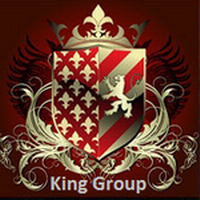Ngày 22 tháng 3 năm 2021
Có hai cột mốc đáng chú ư trong lịch sử nước Nga đương đại. Thứ nhất: tháng 4-1985, Mikhail Gorbachev lần đầu tiên nói đến chính sách Perestroika (tái cấu trúc) và Glasnost (công khai). Hai chủ trương mang tính “cách mạng” này đă dẫn Liên Xô đến sự tan ră. Thứ hai: năm 1994 Anatoly Chubais tiến hành chương tŕnh tư hữu hóa.
Sự kiện thứ hai là hậu quả trực tiếp của sự kiện thứ nhất và cả hai sự kiện đưa đến sự ra đời một nhóm tài phiệt, tạo ra cái mà báo chí phương Tây gọi là “Mafia đỏ”. Chỉ đến thời Putin, sự lũng đoạn của nhóm Oligarch (tập đoàn đầu sỏ chính trị - thuật ngữ chính trị học thời Hi Lạp cổ đại) mới bắt đầu bị hạn chế...
Năm 1989, ở Liên Xô chỉ có 2% người dân sống dưới mức nghèo khó, ở cấp độ 2 đô la/ ngày. 10 năm sau, con số này tăng lên tới ¼ đân số và hơn 40% người Nga sống với số tiền chưa tới 4 đô la/ngày. Công nghiệp Nga sản xuất ít hơn 60% sản phẩm so với 10 năm trước. Thậm chí số lượng gia súc cũng giảm một nửa. Và khoảng 70% GDP chảy qua tài khoản của các Đại gia xuất thân từ cấp thấp thời Liên Xô cũ.
Có 6 nhân vật không quen biết nhau nhưng đều có điểm chung: tận dụng kẽ hở thời Perestroika và Glasnost để chiếm quyền lực và tiền tài. Bốn người trong số đó - Smolensky, Khodorkovsky, Berezovsky và Gusinsky - đă trở thành trùm tài phiệt, làm giàu trong bóng tối với những quan hệ chính trị mờ ám và biến Boris Yeltsin thành công cụ của ḿnh. Hai người c̣n lại - Luzhkov và Chubais - trở thành những chính khách quyền lực. Tại một ”nước Nga mới” thời Mikhail Gorbachev và sau đó là Boris Yeltsin, có quá nhiều khoảng trống - trong hệ thống chính trị lẫn kinh tế - để sáu nhân vật trên lợi dụng. Kẽ hở trong hệ thống chính trị là nơi lư tưởng cho các Mafia Đỏ khai thác vỉa mạch tài sản quốc gia. Giai đoạn này, Roman Abramovich- Ông chủ Chelsea sau này- chưa có “số má” ǵ để có thể bầu bạn của nhóm Berezovsky.

Làm ăn tại một môi trường luật pháp không rơ ràng và tham nhũng khá phổ biến như nước Nga thời mới cải cách là một cuộc chiến bí hiểm ghê rợn. Để có thể tồn tại và phát triển đ̣i hỏi người kinh doanh phải biết luồn lách và xác lập mối quan hệ với quyền lực chính trị. Điều này càng trở nên rơ nét hơn ở các nhà tài phiệt. Kỳ vọng các nhà đại tư bản Đỏ liên minh với các Đảng viên cao cấp, cộng lực thực hiện các chiến lược V́ Nước-V́ Dân là một ảo tưởng lớn.
Năm 2000, ông Vladimir Putin bước vào điện Kremlin với lời hứa với Boris Yeltsin - Lăo tiền nhiệm nghiện rượu nhưng giỏi chọn người- : “Giữ ǵn nước Nga” và “miển mọi trách nhiệm của Boris Yeltsin đối với t́nh h́nh tệ hại của đất nước”. Các trùm tài phiệt chia thành hai nhóm đối lập gay gắt. Roman Abramovich, Alisher Usmanov và Oleg Deripaska là những cánh chim đầu đàn của nhóm ủng hộ. Trong khi đó, Mikhail Khodorkovsky, Boris Berezovsky và Gusinsky lại là hạt nhân của phe quyết tâm hạ bệ Putin và thay bằng một kẻ khác “dễ bảo”. Cuộc chiến giữa quyền lực chính trị và tài phiệt đă nổ ra. Tổng thống Nga không chỉ biết trừng trị các nhà tài phiệt lũng đoạn đất nước bằng “nắm đấm thép” mà c̣n khéo léo ch́a “bàn tay nhung” cho những người nào thực tâm muốn phục vụ cho nhà nước và nhân dân như Roman Abramovich, Oleg Deripaska hay Alisher Usmanov. Ông cũng liên tục gặp gỡ lănh đạo các tổ chức tài chánh lớn như Hội đồng Do thái, một tổ chức đầy quyền lực và được kính trọng ở Nga cũng như trên toàn thế giới. Đây là một trong những nền tảng giúp Vladimir Putin mạnh tay thực hiện cải cách. Kết quả là nền kinh tế Nga vượt qua được khủng hoảng, niềm tin được khôi phục nhưng gây nên những thiệt hại to lớn cho các ông trùm.
Thao túng và lũng đoạn kinh tế quốc gia, các Đại gia có khả năng thọc sâu vào hệ thống quyền lực chính trị với sự chống lưng của các quan chức cao cấp, h́nh thành các nhóm lợi ích. Những bài học của nước Nga khi được soi rọi lại vào giai đoạn thập niên 1990 sẽ chẳng bao giờ cũ, càng không cũ với một số nước cũng đang vật lộn với cơ chế chuyển đổi và khi mà nền kinh tế quốc gia bắt đầu bị thâu tóm bởi những nhóm thế lực ngầm...
Dẩu khác xa về quy mô và độ phức hợp của nội hàm, phần lớn các Nhà Tài phiệt Đỏ Việt Nam hiện nay cũng đi lên từ các chiêu lũng đoạn chính sách Nhà nước hệt Mafia Đỏ Nga. Nhận diện họ không khó. Bạn chỉ cần quan sát lộ tŕnh h́nh thành và triển khai chính sách của các quan chức Đảng đương quyền là thấy lâu đài Tài phiệt. Trọc phú và Quan tham thường thích đàn đúm cùng nhau. Bởi vậy, trong thời buổi này, đừng ngạc nhiên khi các Đại gia hảnh tiến tuyên bố với nhân dân như Lănh tụ, như Bề trên, các Quan chức th́ giải mă hiện tượng xă hội, giải thích chính sách như kẻ tâm thần phân liệt.
English:
March 22, 2021
There are two notable milestones in the history of contemporary Russia. First: April 1985, Mikhail Gorbachev first mentioned the Perestroika (restructuring) and Glasnost (public) policy. These two "revolutionary" policies led the Soviet Union to disintegrate. Second: in 1994, Anatoly Chubais conducted the privatization program.
The second event was a direct result of the first and both events led to the birth of a group of tycoons, creating what the Western press called the "Red Mafia". It was only during the Putin era that the manipulation of the Oligarch group (a political oligarchy - an ancient Greek political term) began to be restricted ...
In 1989, in the Soviet Union only 2% of the people lived below the poverty line, at $ 2 a day. Ten years later, this number rises to a quarter of the population and more than 40% of Russians live on less than $ 4 a day. Russian industry produces 60% less products than it did 10 years ago. Even the number of cattle has halved. And about 70% of GDP flows through the accounts of the Great Family of low-end Soviet era.
There are 6 characters who do not know each other but have in common: take advantage of the gap between Perestroika and Glasnost to win power and money. Four of them - Smolensky, Khodorkovsky, Berezovsky and Gusinsky - became tycoons, enriched in the dark with shady political connections and turned Boris Yeltsin into his tool. The other two - Luzhkov and Chubais - became powerful politicians. In a "new Russia" under Mikhail Gorbachev and then Boris Yeltsin, there was too much space - in both the political and the economic system - to take advantage of the six figures. The loophole in the political system is the ideal place for the Red Mafia to exploit the veins of national property. At this stage, Roman Abramovich - Chelsea boss later - did not have "number of cheeks" to be able to be a companion of the Berezovsky group.
Doing business in an ambiguous and corrupt legal environment as prevalent as the reformist Russia is a formidable war. To be able to survive and thrive requires business people to wriggle and establish relationships with political power. This becomes even more evident in tycoons. It is a great illusion to expect the Red capitalists to ally with high-ranking Party members, joining forces to implement the For Water-For-People strategies.
In 2000, Mr. Vladimir Putin entered the Kremlin with a promise to Boris Yeltsin - Former alcoholic but good at choosing people-: "Preserve Russia" and "dismissed all Boris Yeltsin's liabilities for the bad situation of country". The tycoons divided into two fiercely opposing groups. Roman Abramovich, Alisher Usmanov and Oleg Deripaska are the leading birds of the support group. Meanwhile, Mikhail Khodorkovsky, Boris Berezovsky and Gusinsky were the nuclei of the faction determined to bring down Putin and replace it with another "easy to talk". The war between political power and the tycoon broke out. Russian President not only knows how to punish tycoons who manipulate the country with "steel fists" but also skillfully hold the "velvet hand" to those who sincerely want to serve the state and the people like Roman Abramovich. , Oleg Deripaska or Alisher Usmanov. He also continuously meets with leaders of major financial institutions such as the Jewish Council, a powerful and respected organization in Russia and around the world. This is one of the foundations for Vladimir Putin to aggressively implement the reform. As a result, the Russian economy overcame the crisis, restored confidence, but caused great damage to the tycoons.
Manipulating and manipulating the national economy, the giants have the ability to penetrate the political power system with the backing of high-ranking officials, forming interest groups. The lessons of Russia when re-illuminated in the 1990s will never be old, much less old for some countries also struggling with transitional mechanisms and when the national economy begins to suffer. Acquired by groups of underground powers ...
Despite the difference in the size and complexity of the content, most of the current Vietnamese Red Financiers also come up from the manipulation of State policies like the Russian Red Mafia. Identifying them is not difficult. You just need to observe the roadmap of forming and implementing the policies of the incumbent Party officials to see the tycoon castle. Red Mafia and Corrupt Officials often like to pack together. Therefore, in this day and age, do not be surprised when the giants take steps to declare as leaders, like the superior, and the officials decode social phenomena, explain policy as psychotic paralysis.

























